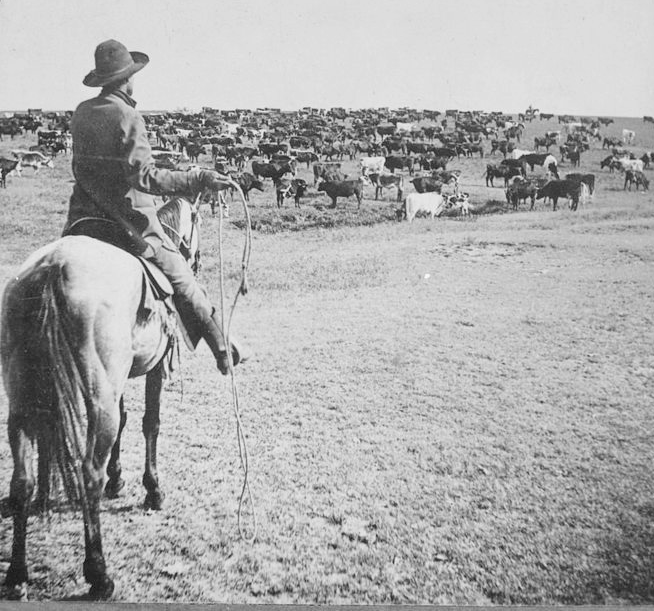Who was John Ware?
For those who don’t know the story of Mr. John Ware, he rightly deserves his reputation. His cowboy skills were legendary and contrary to the popular Hollywood image of cowboys, he was a gentleman. He led an honest, moral life and was a loving father. His work as a cowboy was extremely difficult. The working conditions were hard. In those days, if he was injured or disabled he could expect not much in the way of assistance.
A cowboy’s work is never done
 What was the work of a cowboy anyway? They were responsible for the well-being of the herd of cattle under their care. They were responsible for taking herds from ranches to ranches, if they were sold to another rancher. They had to keep them fed and protected as they grazed. Sometimes they had to move them to new pastureland for better feeding. And they had to be tough enough to protect the herds from poachers and more usually from wild animals. In the days when fences were unheard of in the western plains, they had to keep cattle from wandering away from the main herd.
What was the work of a cowboy anyway? They were responsible for the well-being of the herd of cattle under their care. They were responsible for taking herds from ranches to ranches, if they were sold to another rancher. They had to keep them fed and protected as they grazed. Sometimes they had to move them to new pastureland for better feeding. And they had to be tough enough to protect the herds from poachers and more usually from wild animals. In the days when fences were unheard of in the western plains, they had to keep cattle from wandering away from the main herd.
Cattle drive to Alberta
John Ware was born into slavery in 1845 before the civil war. During the emancipation he was granted his freedom and moved to Texas where he learned the tough life of a cattle hand - a cowboy. At over 6 feet tall and weighing a strong 230 lbs, he took to his tasks easily and became very proficient at handling great herds of cattle. He went on cattle drives which were essentially bringing product to the purchasers. Ranchers bought hundreds of head of cattle from suppliers in Texas (presumably Texas Longhorns that could survive long drives through arid land) and it was the job of Cowboys to deliver them. Eventually, in 1882, he made his way to Idaho where at the age of 37 he joined a cattle drive bringing a herd of cattle across the border to a buyer in Alberta.
I learned a few lesser known facts about cattle drives from Nettie Ware.
 For instance, part of a cowboy’s job during a cattle drive was to ensure the cattle didn’t stray off or turn back. The herd of cattle is basically running, depending on the size of the herd, it would have numbered in the hundreds. To keep these cattle going the right direction, it was important that the lead cattle head in the direction the cattlemen wanted them to go. It wasn’t quite like herding cats, but in a wide open land, it was not an easy task. One tactic was to fire a shot just in front of the lead cattle to make them turn, being careful not to injure them. If that didn’t work, the cowboy had to run in front of theses cattle and force them to turn using the horse - a very dangerous and life threatening act if the steer didn’t behave. This is a typical scene of a herd of cattle in Montana in the late 1800s. Source: Wikipedia
For instance, part of a cowboy’s job during a cattle drive was to ensure the cattle didn’t stray off or turn back. The herd of cattle is basically running, depending on the size of the herd, it would have numbered in the hundreds. To keep these cattle going the right direction, it was important that the lead cattle head in the direction the cattlemen wanted them to go. It wasn’t quite like herding cats, but in a wide open land, it was not an easy task. One tactic was to fire a shot just in front of the lead cattle to make them turn, being careful not to injure them. If that didn’t work, the cowboy had to run in front of theses cattle and force them to turn using the horse - a very dangerous and life threatening act if the steer didn’t behave. This is a typical scene of a herd of cattle in Montana in the late 1800s. Source: Wikipedia
This example was typical of the tasks John Ware had to do did during the cattle drive north to Canada.
Of course, his work wasn’t done at the end of the day. During the night he had to keep watch for rustlers (people who steal cattle) and wolfs who were more likely to attack the herd as they grazed.